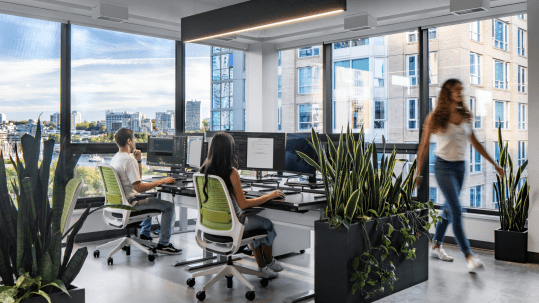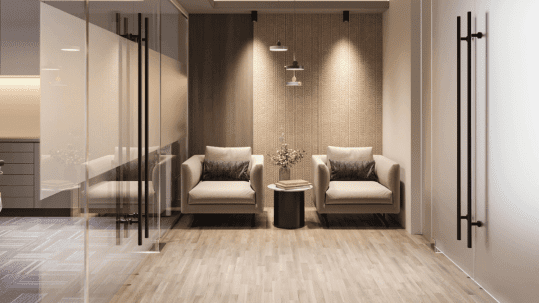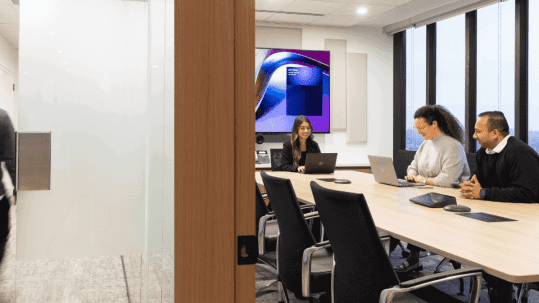In 2020, more people than ever had the opportunity to work from home as organizations around the world made their best efforts to protect their staff from the spread of COVID-19. With renewed faith that staff can get the job done from wherever they work, companies across industries are now offering work from home (WFH) arrangements as the new standard.
To get an idea of what the future might look like for workplaces, we conducted our own research. We found that 68% of survey respondents expect their teams to be working from home 2-3 days a week in the future, spending the rest of their days in the office. The office is then certainly here to stay, but its purpose is changing.
Now that workers aren’t expected to be seated at assigned desks on a daily basis, their visits to the office are becoming much more purposeful. An employee may choose to come into the office a couple of days a week to engage in group-based activities like socializing, brainstorming, or getting involved in a company’s culture and community.
In other words, the office is transforming from a place of work to a destination that provides a work experience. This shift is what we call the shift to experience-based working (EBW).
What is experience-based working (EBW)?
Experience-based working is a working arrangement where work is performed wherever it is the most productive. This can be within the office, or outside the office at home, in cafes, or in co-working spaces.
Experience-based working has been growing in popularity following the COVID-19 pandemic with more employees expecting the option to work from home to enjoy better work/life balance.
How is experience-based working different from activity-based working?
First, let’s take a look at traditional working. If we think back to how we’ve known offices to be for a long time, work is task-based, work is office-based, people work at a dedicated workspace all day unless they’re in meetings, and people are in the office all day, every day. This is what you can imagine for a typical law firm before the pandemic.
Then there’s activity-based working (ABW). With ABW, work is also task-based, but people move between office spaces according to the task they’re performing. They may choose to work at their assigned desk to buckle down and write an article or move over to communal kitchen space to catch up on emails. While employees might move around the office depending on what they’re doing, with ABW, work is still always performed in the office. Employees are still in the office all day, every day.
With experience-based working (EBW), work is based on the experience and not the task. In an experience-based workplace, work takes place wherever it is the most productive, and this doesn’t necessarily have to be in the office.
What’s different about EBW compared to ABW is that people can choose to be in the office only for the duration of the experience. They are not expected to be there all day. Experience-based workplaces also offer a much higher proportion of unassigned seating and are perfectly suited for the mobile worker.
Workplaces that adopt experience-based working may choose to manage the occupancy and capacity of these spaces by using booking apps or hot desks. These apps facilitate how an employee gets access to these spaces when they need them.
What does an experience-based workplace look like?
Experience-based workplaces curate their spaces according to the experience employees are seeking when they choose to work in the office. Spaces can be intended for problem-solving, decision-making, innovation, team-building, or privacy. By offering a range of environments, an organization can help ensure better output for the business whenever its space is used.
An experience-based workplace might offer:
- Large meeting rooms, small meeting rooms, or more casual cafe-like booths in the kitchen to foster group-based activities, collaboration, community-building, and creative problem-solving.
- Outdoor entertainment areas, gaming rooms, town hall meeting space, or large community kitchens to foster team-building and a thriving company culture.
- Private offices or sound-proofed phone booths for confidential phone calls.
- Private booths for focus work like research.
To make sure an experience-based workplace runs as smoothly as possible, a company needs to provide the resources needed to get the most out of each work environment. This can come in the forms of tools, system and technology, from high-speed WiFi connections to interactive whiteboards, and monitors that are easy to plug into.
How can you determine if EBW is right for your office?
With staff working from the comfort of their own homes a few days a week, utilization of your office space is decreasing. You might be questioning just how much real estate you actually need moving forward and whether it’s best to set up your space for EBW or ABW.
To understand how to allocate your space, you must go through the process of uncovering the needs and preferences of your employees as well as understanding what’s most important to them. Only then will you be able to make key decisions on the amount of space you need, and know how to develop your spaces to support their work.
To help companies of all kinds make informed decisions on their real estate needs and workplace strategy, AURA recently announced its partnership with data-driven platform, Pivvot.
When you use Pivvot, you’ll go through a proven process that helps you determine your workplace strategy and the spaces you need to support your employees best.
Pivvot’s process includes a company-wide assessment that helps you categorize your employees into 1 of 3 personas:
- The “office as usual” worker – Your work requires that you mostly work from the office with access to your team, office resources and/or equipment
- The “experience-based” worker – You are known as a “ worker Your work is primarily results driven and requires that you work from the office 2 to 4 days per week with access to your team and office resources
- The “hybrid-remote” worker – Your work is done online with little to no need for face to face interaction with your team
Knowing what proportion of your staff lies in each of these personas is the first step to determining how much square footage of office space you need and whether or not an EBW model is right for you.
Ready to get the knowledge and data you need to form your workplace strategy and make the right real estate decisions that make sense for the future of your organization? Learn more about the Pivvot platform here.






